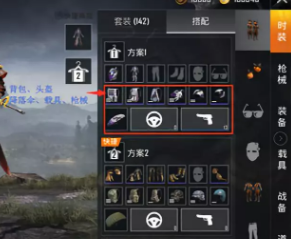asset backed digital currency snippets
Although unmanned shops, hotels and banks seem to belong to the service field, they play an important supporting role in coastal defense islands and border defense work. On the island, unmanned shops can provide daily necessities for the officers and men stationed in the army. Unmanned hotels can provide accommodation services for people who temporarily perform tasks, which reduces the cost of manpower management and improves the flexibility of accommodation arrangements. Unmanned banks facilitate the handling of financial services in frontier islands, such as salary distribution and fund storage, which ensures the flow of funds and financial security in frontier islands.Unmanned driving technology can also play a unique role in coastal defense islands and border defense. At sea, unmanned ships can be used for patrol, material transportation and other tasks. In island defense, unmanned supply ships can accurately transport materials to various islands, reducing personnel risks and improving transportation efficiency. In border areas, unmanned vehicles can perform patrol tasks in harsh terrain and environment. For example, in plateau border areas, unmanned vehicles are not affected by factors such as high altitude and lack of oxygen, and can patrol for a long time according to the set route to find out the sudden situation at the border in time.The coastal defense island area is facing the problems of marine climate, strong wind, high humidity and salt spray corrosion, and the border defense area has complex terrain and extreme climatic conditions. These environmental factors put forward high requirements for unmanned scientific and technological products. For example, when an unmanned aerial vehicle flies over the ocean, salt fog may erode its electronic equipment, and unmanned vehicles may have problems such as difficulty in starting the engine in the alpine mountain area on the border. In view of these problems, it is necessary to develop protective technologies that adapt to special environments. For example, special moisture-proof and anti-corrosion treatment is carried out for the electronic equipment of drones, and engines and parts adapted to the cold environment are developed for unmanned vehicles.
Safety and confidentiality are very important in coastal defense islands and border defense work. Unmanned technology products may face security risks such as interference and hijacking, and the data transmitted by them may also have hidden dangers of leakage. In order to solve this problem, on the one hand, we should strengthen the security protection technology of unmanned scientific and technological products, such as encrypting data transmission and setting up anti-interference mechanism; On the other hand, it is necessary to establish a strict confidentiality management system and strictly supervise the use, data storage and transmission of unmanned technology products to prevent information leakage.2. Unmanned driving: an intelligent helper for land and sea transportation2. Task execution in dangerous environment
The coastal defense island area is facing the problems of marine climate, strong wind, high humidity and salt spray corrosion, and the border defense area has complex terrain and extreme climatic conditions. These environmental factors put forward high requirements for unmanned scientific and technological products. For example, when an unmanned aerial vehicle flies over the ocean, salt fog may erode its electronic equipment, and unmanned vehicles may have problems such as difficulty in starting the engine in the alpine mountain area on the border. In view of these problems, it is necessary to develop protective technologies that adapt to special environments. For example, special moisture-proof and anti-corrosion treatment is carried out for the electronic equipment of drones, and engines and parts adapted to the cold environment are developed for unmanned vehicles.Safety and confidentiality are very important in coastal defense islands and border defense work. Unmanned technology products may face security risks such as interference and hijacking, and the data transmitted by them may also have hidden dangers of leakage. In order to solve this problem, on the one hand, we should strengthen the security protection technology of unmanned scientific and technological products, such as encrypting data transmission and setting up anti-interference mechanism; On the other hand, it is necessary to establish a strict confidentiality management system and strictly supervise the use, data storage and transmission of unmanned technology products to prevent information leakage.
Strategy guide
12-13
Strategy guide 12-13
Strategy guide 12-13
Strategy guide
12-13
Strategy guide 12-13
Strategy guide
12-13

Strategy guide
12-13
Strategy guide
12-13





























